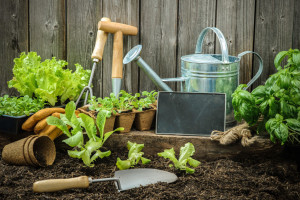Kincaid Labels for Greenhouses Are as Durable as Your Commitment to Gardening
 For many Americans another season of gardening is drawing to a close. This summer was feast or famine in much of the nation. Some areas endured parched months while others were inundated by drenching downpours. Now, nearly everywhere, as days grow shorter, daylight lessens and temperatures cool, the ability to grow flowers and vegetables is winding down. Unless, you are fortunate enough to have a space for a greenhouse. These wonderful micro-climate environments allow you the pleasure of extended, almost year-round growing. With a simple structure, the proper light and ventilation and labels for greenhouses, you can keep your green thumb busy with little regard for the calendar page.
For many Americans another season of gardening is drawing to a close. This summer was feast or famine in much of the nation. Some areas endured parched months while others were inundated by drenching downpours. Now, nearly everywhere, as days grow shorter, daylight lessens and temperatures cool, the ability to grow flowers and vegetables is winding down. Unless, you are fortunate enough to have a space for a greenhouse. These wonderful micro-climate environments allow you the pleasure of extended, almost year-round growing. With a simple structure, the proper light and ventilation and labels for greenhouses, you can keep your green thumb busy with little regard for the calendar page.
Greenhouses can be as simple as some handmade ground level boxes with glass lids or as complex as re-created tropical realms. The simplest and least costly greenhouse is the cold frame structure. This greenhouse relies on the warmth of the earth and the sun to nurture young plants. Should temperatures unexpectedly drop, gardeners compensate by adding extra protective layers – think sacks of leaves or blankets. You can extend your growing season with a cold frame greenhouse and then, later on, use it to store your bumper crop of root vegetables on a straw bed over the winter.
The more versatile, and therefore more costly, greenhouses are structures which can be heated and ventilated acting as plant nurseries long after the ground itself is hardened by cold and the sun shares little warmth. Potted vegetables and flowers can be nurtured in these more complex structures. Complex simply means that with a little insulation (double-paned glass or foam) and a space heater set to 55*F-85*F, you can grow warm season vegetables and plants even when the thermometer registers COLD. Just imagine enjoying juicy tomatoes, crisp cucumbers and flavorful squashes in the bleak midwinter.
With less cost and attention to managing the climate you can still bring in a second or third harvest of cool season veggies such as broccoli, lettuces and peas. Cool weather crops do quite well in a protected but not too fussy environment. Break out the labels for greenhouses because you will be wanting to plant several varieties to grace the winter dinner table.
Flowers and plants also benefit from a home greenhouse. Don’t throw out your summer ferns just when they’ve reached their abundant foliage. Instead of sacrificing them to the first frost, bring them into the greenhouse and have lush ferns at the start of next outdoor season. Keep geraniums, mums and impatiens healthy and ready for next years’ landscaping too. Only the most tropical flowers will demand precise greenhouse conditions.
So depending upon how long you choose to garden, choose the greenhouse that fits your needs. A cold frame will give you a few extra weeks or a couple of months. A heated greenhouse will allow you to grow and protect all winter long. In either case you’ll want labels for greenhouses that can stand up to all kinds of weather. At Kincaid Plant Markers that is precisely the kind of durability you can expect. We’re a Midwest company that understands changeable conditions in the garden and we offer markers that can stand up to it all. Check us out and see how we set the standard for quality.
